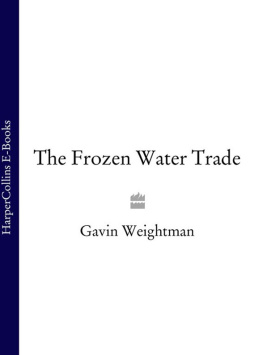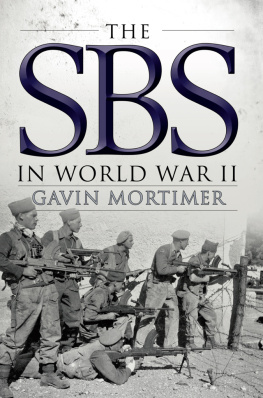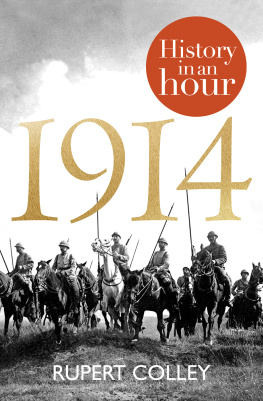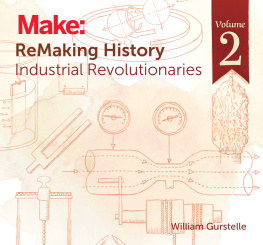Gavin Weightman - The Industrial Revolutionaries: The Making of the Modern World, 1776–1914
Here you can read online Gavin Weightman - The Industrial Revolutionaries: The Making of the Modern World, 1776–1914 full text of the book (entire story) in english for free. Download pdf and epub, get meaning, cover and reviews about this ebook. year: 2007, publisher: Grove Atlantic, genre: Art. Description of the work, (preface) as well as reviews are available. Best literature library LitArk.com created for fans of good reading and offers a wide selection of genres:
Romance novel
Science fiction
Adventure
Detective
Science
History
Home and family
Prose
Art
Politics
Computer
Non-fiction
Religion
Business
Children
Humor
Choose a favorite category and find really read worthwhile books. Enjoy immersion in the world of imagination, feel the emotions of the characters or learn something new for yourself, make an fascinating discovery.

- Book:The Industrial Revolutionaries: The Making of the Modern World, 1776–1914
- Author:
- Publisher:Grove Atlantic
- Genre:
- Year:2007
- Rating:5 / 5
- Favourites:Add to favourites
- Your mark:
- 100
- 1
- 2
- 3
- 4
- 5
The Industrial Revolutionaries: The Making of the Modern World, 1776–1914: summary, description and annotation
We offer to read an annotation, description, summary or preface (depends on what the author of the book "The Industrial Revolutionaries: The Making of the Modern World, 1776–1914" wrote himself). If you haven't found the necessary information about the book — write in the comments, we will try to find it.
The Industrial Revolutionaries: The Making of the Modern World, 1776–1914 — read online for free the complete book (whole text) full work
Below is the text of the book, divided by pages. System saving the place of the last page read, allows you to conveniently read the book "The Industrial Revolutionaries: The Making of the Modern World, 1776–1914" online for free, without having to search again every time where you left off. Put a bookmark, and you can go to the page where you finished reading at any time.
Font size:
Interval:
Bookmark:
THE INDUSTRIAL REVOLUTIONARIES
Also by Gavin Weightman
London River: A History of the Thames
The Frozen Water Trade
Signor Marconis Magic Box
THE MAKING OF THE MODERN WORLD 17761914
GAVIN WEIGHTMAN

Copyright 2007 by Gavin Weightman
All rights reserved. No part of this book may be reproduced in any form or by any electronic or mechanical means, or the facilitation thereof, including information storage and retrieval systems, without permission in writing from the publisher, except by a reviewer, who may quote brief passages in a review. Any members of educational institutions wishing to photocopy part or all of the work for classroom use, or publishers who would like to obtain permission to include the work in an anthology, should send their inquiries to Grove/Atlantic, Inc., 841 Broadway, New York, NY 10003.
First published in Great Britain in 2007,
by Atlantic Books, an imprint of Grove Atlantic Ltd.
Printed in the United States of America
FIRST AMERICAN EDITION
eBook ISBN-13: 978-1-5558-4885-9
Grove Press
an imprint of Grove/Atlantic, Inc.
841 Broadway
New York, NY 10003
Distributed by Publishers Group West
www.groveatlantic.com
Spinning Jenny, 1811. Arbraham Rees, The Cyclopaedia of Arts, Sciences and Literature, plates, vol. iv, Longman, Hurst, Rees, Orme & Brown, 1820.
Cannon boring machine, 1812. Arbraham Rees, The Cyclopaedia of Arts, Sciences and Literature, plates, vol. ii, Longman, Hurst, Rees, Orme & Brown, 1820.
Canal scene, 1809. Arbraham Rees, The Cyclopaedia of Arts, Sciences and Literature, plates, vol. ii, Longman, Hurst, Rees, Orme & Brown, 1820.
Richard Trevithicks portable steam engine, Catch-me-who-can, 1814. Courtesy of the Trevithick Society.
Guillotine, 1790s. Courtesy FCIT.
Fultons nautilus, 1798. Public domain.
Portable theodolite, 1817. Arbraham Rees, The Cyclopaedia of Arts, Sciences and Literature, plates, vol. iv, Longman, Hurst, Rees, Orme & Brown, 1820.
Steam train with cowcatcher, c. 1850. Courtesy FCIT.
Navvy. Punch, vol. 28, 1855.
German customs, c. 1830. Public domain.
Welsh iron works, c. 1840. Public domain.
Morse code machine, 1877. Courtesy of the Library of Congress, LC-USZ62-110409.
Crystal palace, 1851. Mary Evans Picture Library, 10071391.
John Manjiro, c. 1852. The Museum of Art, Kochi, Japan.
James Youngs paraffin lamp, c. 1864. Courtesy of Strathclyde University Archives.
Henry Bessemers moveable converter, c. 1860. Henry Bessemer, An Autobiography, Offices of Engineering, 1905.
Steam vehicle in Tokyo, Japan, 1870. Courtesy of the Library of Congress, LC-USZC4-10643.
Early motor car. Observer, 9 December 1827.
Thomas Edisons electric lamp, 1880. Courtesy of the U.S. National Archives and Records.
Outrigged Torpedo Pinnace attacking an Iron-clad. Harpers Weekly, 14 July 1877. Courtesy of the U.S. Navy Art Collection, Washington, D.C.
Justus von Liebigs laboratory at Giessen, c. 1840. Public domain.
1. Cromford Mill in Derbyshire, 1771. Mary Evans Picture Library, 10090218.
2. John Wilkinson, c. 1780s. Science Museum, 10419510.
3. Du Pont powder mills, 1804. Hagley Museum and Library.
4. Marc Isambard Brunel, c. 1802. Science Museum, 10300792.
5. Warship, early 1800s. Mary Evans Picture Library, 10043435.
6. Fultons pioneer steamboat, the North River or Clermont, 1807. Science Museum, 10318047.
7. Richard Trevithick, 1816. Science Museum, 10198838.
8. Paris to Rouen railway line, 1800s. Science Museum, 10419999.
9. Opening of Crystal Palace, 1851. Mary Evans Picture Library, 10022873.
10. Challenge board for Bramah padlock, 1801. Science Museum, 10305355.
11. The McCormick reaper, c. 1850. Mary Evans Picture Library, 10002154.
12. Railway conveyances on the Liverpool to Manchester railway, 1834. NRM, 10302114.
13. South Sea whaling, 1835. Courtesy of The New Bedford Whaling Museum.
14. American steamer in Japan, 1861. Courtesy of the Library of Congress, LC-USZC4-1274.
15. The Battle of Chemulpo Bay, 8 February 1904. Arthur M. Sackler Gallery, Smithsonian Institution, Washington, D.C., Gift of Gregory and Patricia Kruglak, S2001.37a-c.
16. Bicycling, c. 1887. Courtesy of the Library of Congress, LC-USZC4-3043.
17. The first bicycle fitted with inflatable tyres, 1888. Mary Evans Picture Library, 10129078.
18. Motoring in England, 1903. Mary Evans Picture Library, 10040114.
19. Advertisement for Extractum Carnis Liebig, 1800s. Copyright Bibliotheque des Arts Decoratifs, Paris, France/Archives Charmet/The Bridgeman Art Library.
20. American expedition at Yokuhama, Japan, 1854. Courtesy of the Library of Congress, LC-USZ62-8127.
21. The Choshu Five, 1863. Courtesy of University College London.
22. Justus Liebig, 1843. Science Museum, 10267609.
23. Henry Bessemer, c. 1870. Rischgitz/Getty Images.
24. Thomas Edison, 10301363.
25. Robert Whitehead, 1875. Public domain.
26. Daimler motocycle, 1885. Science Museum, 10322617.
27. John Dunlop, c. 1890. Science Museum, 10301166.
28. Horse-drawn bus in London, early 1900s. Mary Evans Picture Library, 10193105.
29. Vice-Admiral Petrovich Rozhestvensky, 1904. RIA Novosti/TopFoto, 0828045.
30. Postcard celebrating the signing of the Treaty of Portsmouth, 1905. Courtesy of the Library of Congress, LC-DIG-ppmsca-08199.
31. Army recruits, 1914. Imperial War Museum, Q 53581.
For those of us who work alone, without the companionship and broad knowledge of academic colleagues, the internet has proved to be invaluable. There is now on the web a wealth of original documentation available for instant download as well as easy access to useful reference books through e-libraries. These resources lift some of the loneliness of the authors desk, but much more significant is the contact made with a global network of experts and enthusiasts, not all of them mainstream academics. In researching The Industrial Revolutionaries I had the good luck early on to find in the London Library a book called The Transfer of Early Industrial Technologies to America. In short, succinct chapters there were accounts of the way in which European industrial know-how had been taken across the Atlantic during the late eighteenth and early nineteenth century. The book had been published nearly twenty years earlier, in 1987, and I wondered if I would be able to find the author, Darwin H. Stapleton. It turned out to be as simple as tapping his name into a search engine to discover that he was the Executive Director of the Rockefeller Archive Centre in Sleepy Hollow, New York.
An email to Darwin Stapleton elicited an immediate response and the beginnings of a dialogue which has been absolutely vital to the authorship of this book. I was introduced to the historical discipline known as technology transfer and provided with a hugely rewarding reading list. For well over a year, from the first contact, Darwin Stapleton and I never spoke on the phone. Everything was by email. And, of course, we have never met. Without the internet I doubt that I would have got beyond the book I found in the London Library. As it is, I am hugely indebted to its author.
Next pageFont size:
Interval:
Bookmark:
Similar books «The Industrial Revolutionaries: The Making of the Modern World, 1776–1914»
Look at similar books to The Industrial Revolutionaries: The Making of the Modern World, 1776–1914. We have selected literature similar in name and meaning in the hope of providing readers with more options to find new, interesting, not yet read works.
Discussion, reviews of the book The Industrial Revolutionaries: The Making of the Modern World, 1776–1914 and just readers' own opinions. Leave your comments, write what you think about the work, its meaning or the main characters. Specify what exactly you liked and what you didn't like, and why you think so.










